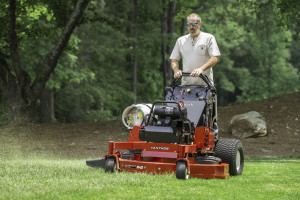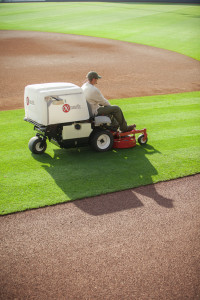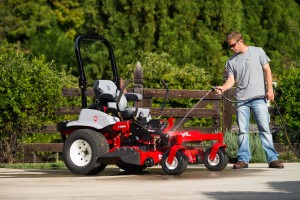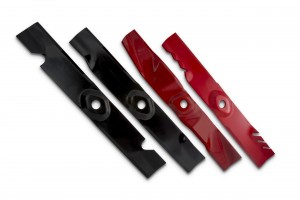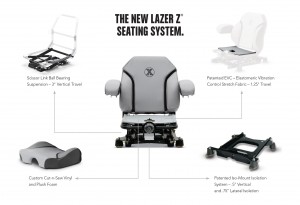When it comes to the purchase of a new mower, you have more choices than ever before. Instead of merely the choice between a push mower and a riding lawn mower, today we have walk-behind mowers, stand-on mowers and zero-turn mowers to choose from.
Once you’ve decided which mower type you want, it makes sense to consider which fuel is your best option. Gasoline isn’t the only choice anymore. There are also a wide variety of propane lawn mowers to choose from. But which one is better, gasoline or propane?
Advantages of Propane
There are several advantages to propane as a mower fuel. For example, propane stores longer than gasoline. You don’t have to worry about fuel quality degradation over the winter, so you can store the mower in the garage and from a fuel standpoint, it’ll be ready to go when it’s time to mow again in the spring.
Propane is typically less expensive than gasoline. You’ll also find that propane prices don’t fluctuate as much as the price of gasoline. Since propane prices are often lower in the summer, propane-powered lawn mowers are becoming more popular with landscape professionals, too.
In addition to paying less per gallon, using propane also eliminates the possibility of a hazardous and costly spill. Propane also reduces the likelihood of fuel being stolen for use in other vehicles. Last but not least, propane is environmentally friendly. Propane-fueled mowers produce fewer greenhouse gasses than gasoline mowers, making them a good choice in areas where air quality is an issue.
When it comes to using propane-powered lawn mowers, it’s important to remember to fill the propane tank (or keep an alternate) before you start mowing. But propane’s growing popularity as an alternative fuel means you shouldn’t have trouble finding a filling station nearby.
Advantages of Gasoline
Gasoline-powered lawn mowers continue to be popular for a number of reasons, but universal fuel availability is a big one. If your mower runs out of gas, it’s easy to get it refilled. You can purchase gasoline at any gas station, virtually any time of day. Plus, it’s relatively easy to carry a small gas canister to and from the filling station.
Gasoline engines are available in a wide variety of sizes and configurations, so chances are you’ll be able to find a mower type and size to suit your needs. As a result, today, gasoline engines power the majority of our mowers.
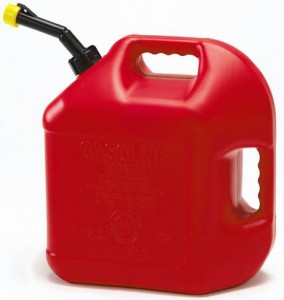 When Gasoline-Powered Mowers Make Sense
When Gasoline-Powered Mowers Make Sense
We recommend gasoline-powered lawn mowers to most homeowners. For a small or medium-sized property, you’ll find a wider variety of gasoline-fueled mower options suited to the task. While you may still like to take one of our zero-turn lawn mowers for a ride, you might be better served with a smaller self-propelled walk-behind for your property. And nine times out of ten, those mowers will be gasoline-powered.
For a smaller property, you’re not going to be mowing the yard for several hours. This means you probably aren’t going to use enough fuel each year to be able to realize a significant cost benefit using propane. Of course, that doesn’t mean you can’t purchase a propane-powered mower to maintain a small- to medium-sized property. But the difference in fuel cost really pays off for commercial and professional users.
When You Should Choose Propane
Propane-powered lawn mowers, whether they are zero-turn mowers or not, are most useful for commercial and professional users and large properties. Propane mowers give these users the opportunity to reduce fuel expenditures by up to 25 percent, which is a big deal. If you’re running your lawn mower for eight hours a day or more, you’re probably spending a lot of money on fuel.
When it comes to mowing the lawn professionally, it’s also a good idea to consider the environment. After all, switching to a propane-powered lawn mower is really noticeable when you cut grass for a living. Fortunately, you don’t have to trade energy efficiency for power. Thanks to state-of-the-art Kohler EFI-propane powerplants, our propane mowers offer exceptional performance while being easier on the planet.
If you are a landscape contractor, you may also want to look into grants or rebate programs from the Propane Education and Research Council (PERC), or other agencies to help you defray the initial cost of the propane mower. That said, even without financial assistance, your business would benefit from the cost benefits a propane mower will deliver over time.
References:
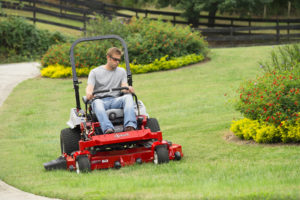 commercial grade products.
commercial grade products.
